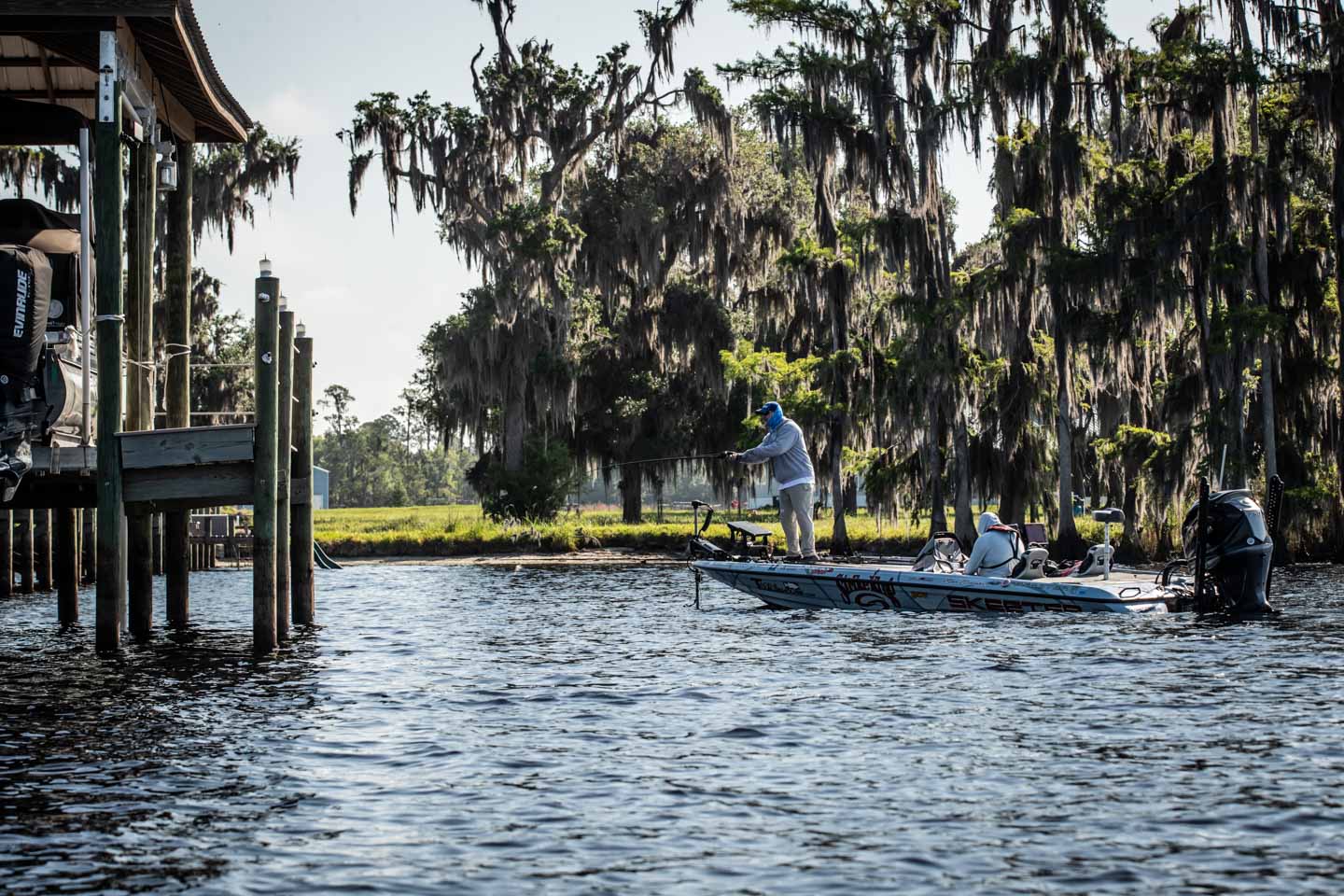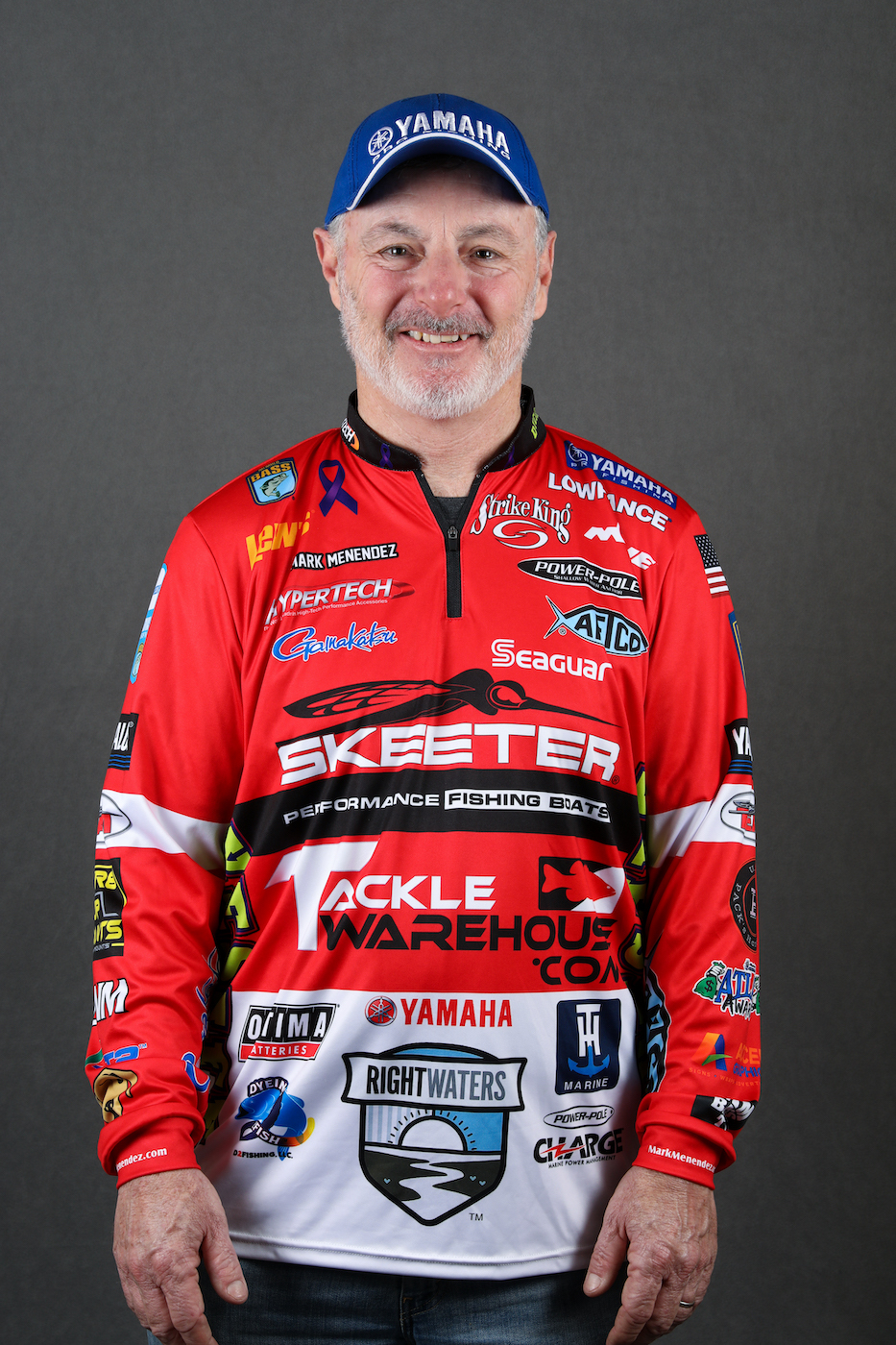
I don’t know about you, but this season has always been one of the toughest times of the year to consistently pattern bass. This late-summer period when the trees are just showing a hint of turning toward fall colors and the overnight temperatures are cooling, but it’s not enough to push the shad to migrate and the bass to follow. It can be completely confusing.
One of the ways I’ve tried to combat this for myself is to mix together ingredients to kind of bake a day of fishing that turns out to be decent in the end. Here’s my recipe for cooking up something right now as I’m filming my Mark Menendez Bass TV show and out working on my fishing skills on Kentucky Lake before it gets too cold.
In order to put together a decent bag right now, I’m having to separate the day into two distinct parts — and even target two species to make things work. In the morning, I’m going to go after the smallmouth. Then I’ll move to the creeks for largemouth later.
During the low-light hours, I run the main lake points and bars for smallmouth on Kentucky Lake. I’ve found this is the best time to get two or three decent bites for brown bass. I will hit shady banks as the sun comes up, but I start on those gravel flats, points and sandy areas on the main lake and try to work quickly.
I will have two baits tied on — a Strike King Sexy Dog Hard Knock walking bait and a Burner spinnerbait. The key here is to move fast and throw the topwater for a few casts, then burn/wake the spinnerbait over the areas for a few before moving to the next one. If I’m really trying to be efficient, then I really focus on the areas of rock transition on those areas. These are the areas where rock steps down in size. An area where baseball-sized rock transitions to gravel, or gravel transitions to sand, can be enough to hold bass looking to feed.
I throw the spinnerbait on a 7-foot, 2-inch mod-fast Lew’s Custom Lite, and I use the Hyperspeed 9.5:1 gear ratio reel to really cover a lot of water and wake that spinnerbait. I spool the reel with 20-pound-test Seaguar Invizx Fluorocarbon not because I need the strength of 20-pound line, but because the thicker diameter helps keep the bait higher in the water with the additional lift it provides. Because I am burning this bait and the smallmouth slash at it so much, I always run a Gamakatsu trailer hook on it too. For the retrieve, I reel it very fast and position the rod so that the blades bulge the surface, but don’t break it.
For the Sexy Dog, I rig it on a 6-foot, 8-inch medium-fast ProTi Topwater rod from Lew’s which I pair with a 7.5:1 ProTireel spooled with 40-pound-test Seaguar TactX braided line. I always change out the hooks on my Sexy Dogs to three, size 3 Round Bend Gamakatsu treble hooks. I want to skitter walk this bait across the surface to make it mimic a large fleeing shad, and the strikes will be unbelievably aggressive.
That session will often last until about 10 a.m. and then it’s time to go looking for largemouth. When I do this, I’m heading toward the backs of the creeks and I’m picking up a 7-foot, 6-inch Team Lew’s Signature Greg Hackney Flipping Stick and an 8.3:1 Lew’s Hypermag reel spooled with 20-pound-test Seaguar Invizx. On the end of that line, I’m going to have a Texas-rigged Strike King Rage Craw on a 5/0 Gamakatsu Flipping hook with a 5/16-ounce Tour Grade Tungsten Flipping Weight. Or, I will have a 1/2-ounce Greg Hackney Fluorocarbon Flipping Jig with a Rage Craw Trailer on it.
I’m going to look for shady banks, and I’m going to target docks in these areas. I’m going to hit every dock post I can, and when I get a bite, I’m going to slow down and fish methodically because the largemouth tend to group up under docks. I’ve been in creeks before and only caught fish off one dock, but when I did, I ended up catching a half dozen under that one dock.
That’s my late summer/early fall recipe for cooking up some action. Try it on your lake.

